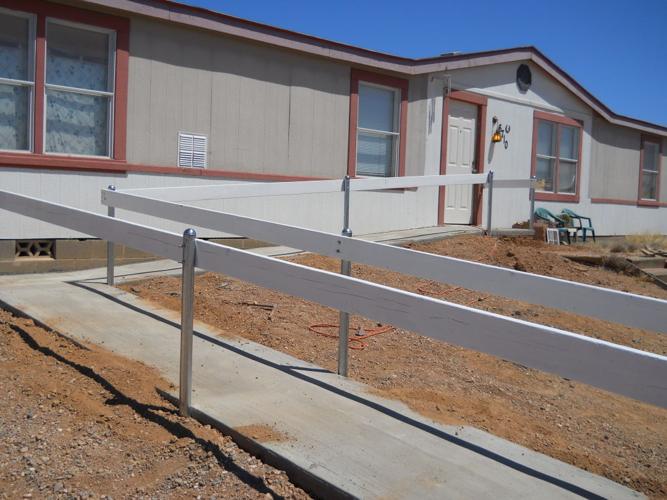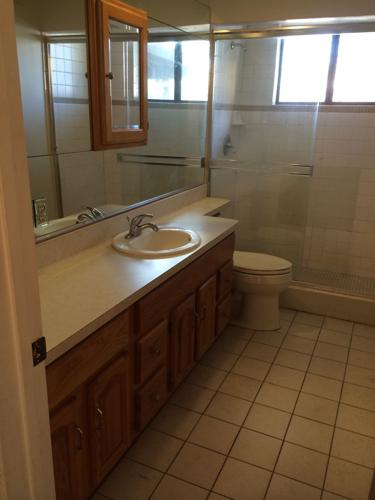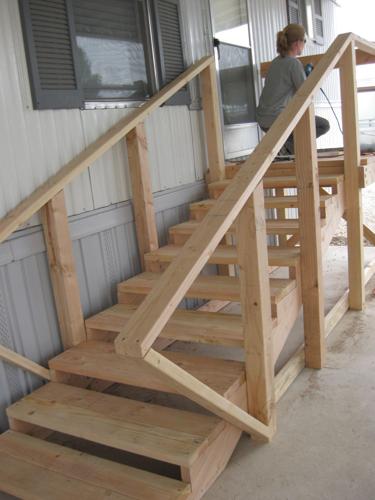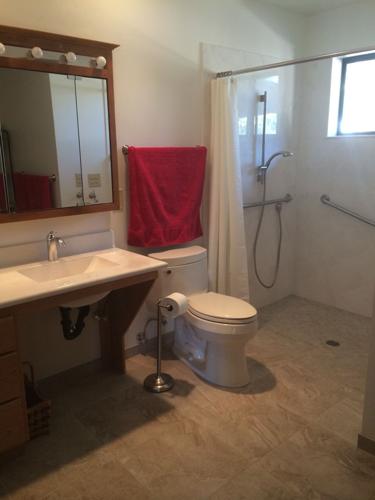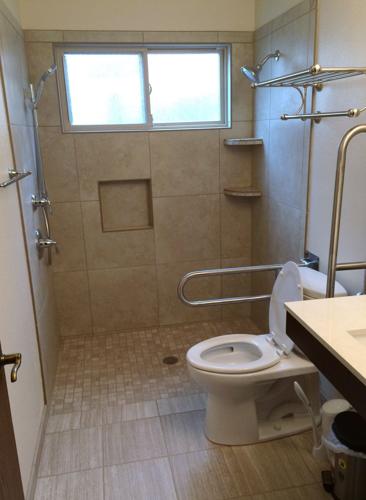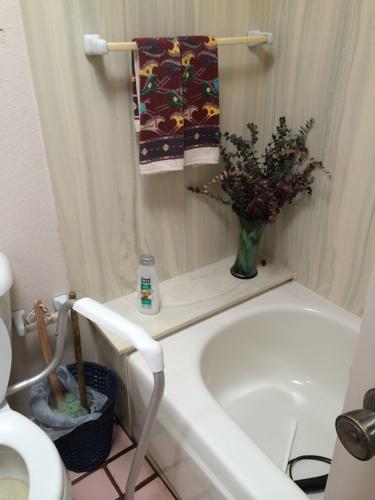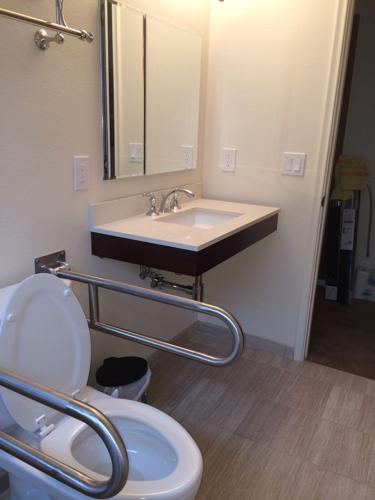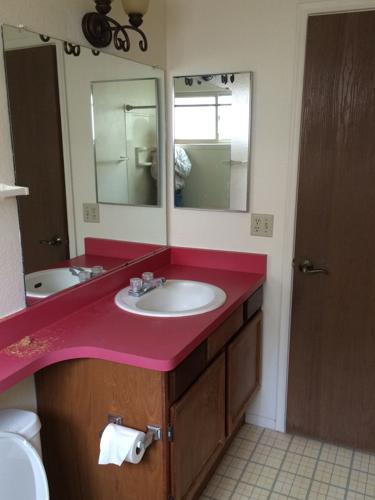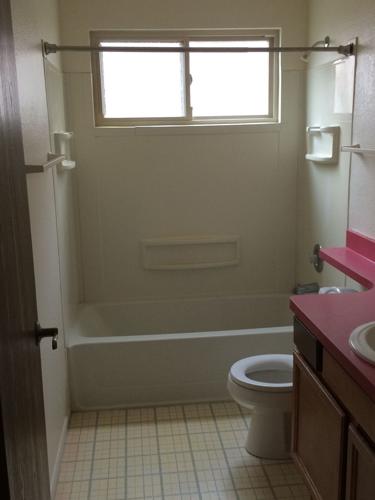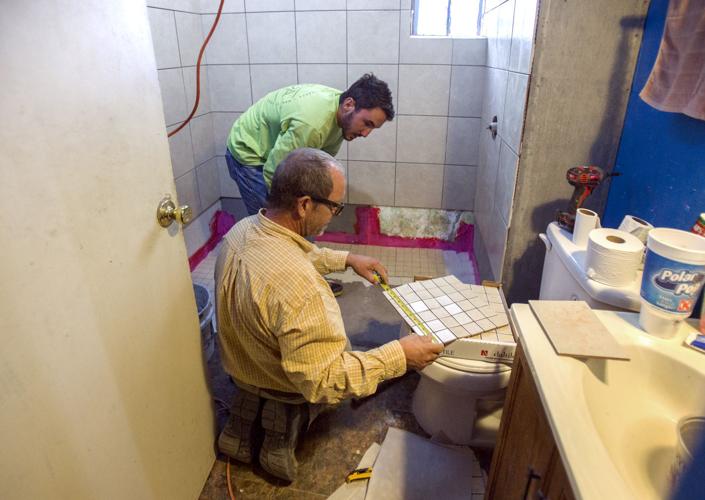It’s a day that’s on the horizon for many of us.
It usually comes with age. For some it comes early because of injury or illness.
It’s the day you look around your home and ask yourself, “Is it safe for me to be here.”
But it’s not about the neighborhood. It’s about the home itself. Is it safe to take a shower without the risk of a life-altering fall? Can you get in and out of your home and not trip over a step that was easy to maneuver not that long ago?
For most, the decision to stay or not to stay is easy, said Antonio C. Estrada, program manager at Pima Council on Aging. People want to stay in their homes as long as possible. The hard part, Estrada said, is whether they can stay and be safe.
“It’s their home. They don’t want to leave,” Estrada said. “They don’t want to go into a nursing facility. They want to stay in their home as safely as possible for as long as possible. We want our population to age in place and that’s what they want.”
But to be safe can sometimes require that a home be modified so the resident can go about his or her daily business — bathing, cooking, moving to another room — while minimizing the risk of a fall and serious injury or even death.
It can be a relatively simple thing like installing grab bars and railings on walls, staircases and in bathrooms. Or it can be a more involved modification like turning a bathtub into a walk-in or roll-in shower.
Olivia Godoy, 63, said she was fairly self-sufficient until she had a stroke in June that left her paralyzed on her left side. She said she could drive herself places and maneuver around the South Tucson home where she’s lived for 30 years with no problems. By the time she had been through rehabilitation for the stroke, her life had completely changed, except for one thing. She still wanted to be home.
“I stayed with my daughter when I first got out, but I just wanted to come home to my house,” she said.
The issue for Godoy is that she is mostly confined to a wheelchair, and her single bathroom was already a tight space, her washing machine taking up a good portion of the space. She needed a modification that would allow her to roll her wheelchair into the bathroom to use the facilities, including the shower.
Living on a limited income, Godoy said she didn’t have the $6,000 she was told she would need for a contractor to modify her bathroom. Fortunately, she had a niece who found out about the services provided by Community Home Repair Projects of Arizona, a local nonprofit agency that provides assistance to low-income homeowners who don’t have the funds to modify or repair their homes.
Last week, CHRPA wrapped up a week-long project to remove the washing machine from the bathroom and take out a wall to expand the shower space so Godoy could get in there in the wheelchair, all at no cost to Godoy. CHRPA receives funding from a variety of sources, including the city of Tucson and Pima County.
Dan Wilhelm, who was working Godoy’s project with volunteer Jimmy Callan, said that aside from modifying the shower, he also was installing a special hinge on the bathroom door for easier access. And he was going to finish the job by installing the plumbing needed to hook up the washing machine outside.
Godoy said it was a “big relief” for her that she could stay home, even though the stroke will have many other lifelong effects on her life. “I’ll be able to go in and take a shower and do everything myself,” she said.
Scott Coverdale, executive director at CHRPA, said modifications that can help a senior citizen “age in place” cover a wide range of areas beyond bathrooms and grab bars, but mostly, it’s about a resident’s maneuverability and balance, and how to keep them safe from a fall.
“As people age, they get a little less ambulatory,” Coverdale said. “They might be at risk to fall or they take medication that makes them dizzy. They might start using a cane, and they might have difficulty navigating steps into their home. So we are happy to build ramps and put up railings. We’ll replace stairs that are rickety. Those things enable people to stay in their homes.
Larry Hume has been in the construction business since the mid-70s, but he started his current business, Accessible Home Remodeling, about five years ago. He said he went through a difficult time with his mother who fell three times before she had to move to assisted living.
Hume’s business is on a list of contractors that Pima Council on Aging vets and then provides to clients who contact the agency looking for an honest, reliable contractor to do the type of work they need to stay home.
Hume said the work to make elderly people safe in their homes is just beginning. With baby boomers retiring at an ever-increasing pace — 10,000 per day are turning 65, according to Estrada — Hume said, the U.S. is not a society built for the aging population.
“A third of my clients get hurt on public sidewalks,” Hume said. “You always have to be looking down.”
Hume said that’s where he recommends any home modification project should begin, with the many curbs in a house, starting at the front and back doors.
“Those are the biggest trip hazards that there are,” Hume said. “I would say that’s No. 1 on the list because that’s going in and out of the house.”
Item 2 on the priority list, Hume said, is making the bathroom safer. That can involve an all-out remodel, or just removing a tub that a resident has to step into and replacing it with a “no-barrier” shower that requires no stepping up or down, as was done on Godoy’s house.
The $6,000 estimate that Godoy received is about right, Hume said. Renovating a bathtub or shower can involve bringing in a jackhammer to take out the concrete under the existing bathtub to lower the shower floor for proper drainage and to achieve the goal of not having to step over a curb.
Coverdale and Hume both offer another piece of advice, which is to look ahead — even before the big 6-Oh — and think about some simple and affordable modifications that make your home safer regardless of your age.
“Some things should be done proactively,” Coverdale said. “I’m a big fan of putting grab bars in a shower or bathtub because they’re not going to wear out. If you don’t need them, fine, don’t use them. But the time you step on the bar of soap and you slip and you grab one, you’re going to congratulate yourself for your foresight.
“If that handrailing is broken at your steps, don’t say, ‘I don’t really use it,’ because someday you’re going to trip and you’re going to grab it and you’re going to wish you would have fixed it. I don’t expect people to put up a wheelchair ramp when they turn 60 just because they might need it. That’s a different thing. But when you turn 60, you have to think, ‘Is this house sustainable for me?’”


